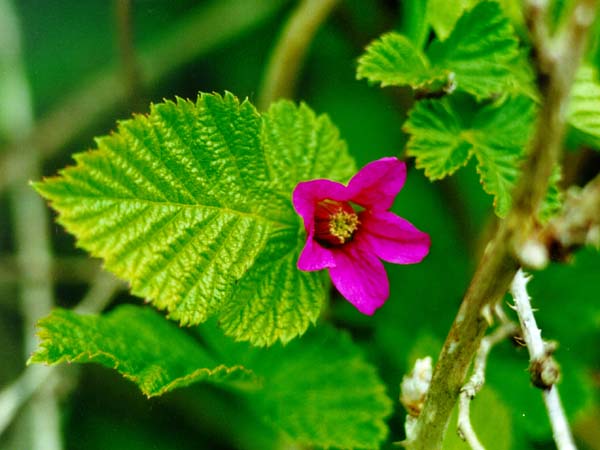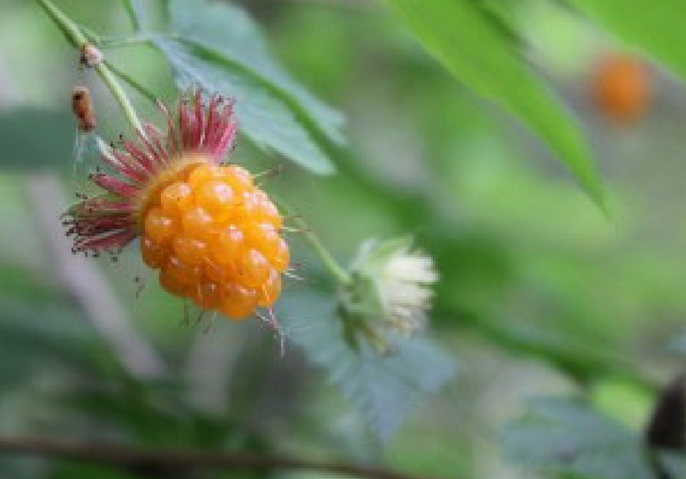Edible nature in Seattle’s forests: Salmonberries are here!
Note: Even after seven years, one of the most popular blog posts we’ve ever written continues to be this one about the native (and delicious) salmonberry. It’s nearly salmonberry season again so we’re reposting it today. Get out there and enjoy these native treats! -The Restoration Team
The salmonberries in the greenbelt are nearly ripe and ready to eat! These native treats look like raspberries but have an orange-pink (or sometimes bright red) color. They are in the same family as non-native pest Himalayan blackberry and make a great substitute when you want to remove the invasive blackberry. Salmonberries are an important food source for local wildlife because they are one of the first berries to ripen in the summer.
Both the berries and the bark of this plant have also been an important plant for the indigenous people of the Northwest. For example, the Makah people of the Olympic Peninsula have used a poultice of the bark for treating wounds, burns, and toothaches. Many tribes also eat the berries and shoots.
Have you seen any of these native treasures near you? Here are a few quick facts to help you identify salmonberry at a glance. Click on the links below for photos.
Scientific name: Rubus spectabilis. This is a native relative of the non-native Himalayan blackberry (Rubus armeniacus), making it a great substitu
General info: Salmonberry is a deciduous shrub with a woody stem. These water-loving plants are usually found near stream banks or in wet forests. Its range spans the western U.S. coast from Alaska to northern California. They tend to grow in thickets and can reach up to 10 feet tall.
Leaves: The leaves grow in groups of three and have a somewhat triangular or teardrop shape with jagged edges. The veins in the leaves form visible furrows.
Stem: The main stems are light brown and woody with many thorns. The leaf stems are light green and also thorny.
Flower: The flower is bright pink with five petals, generally in blooms in April -May.
Berries: The berries resemble raspberries or blackberries and are orange-pink or red in color. Next time you see them ripe in the woods, take a bite!

